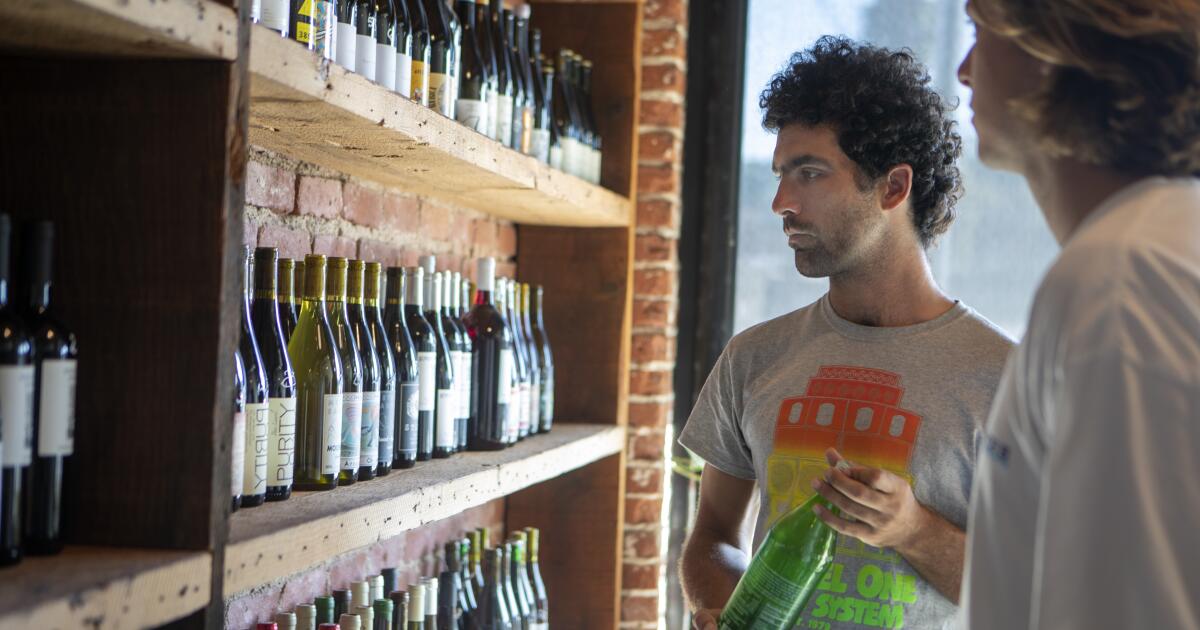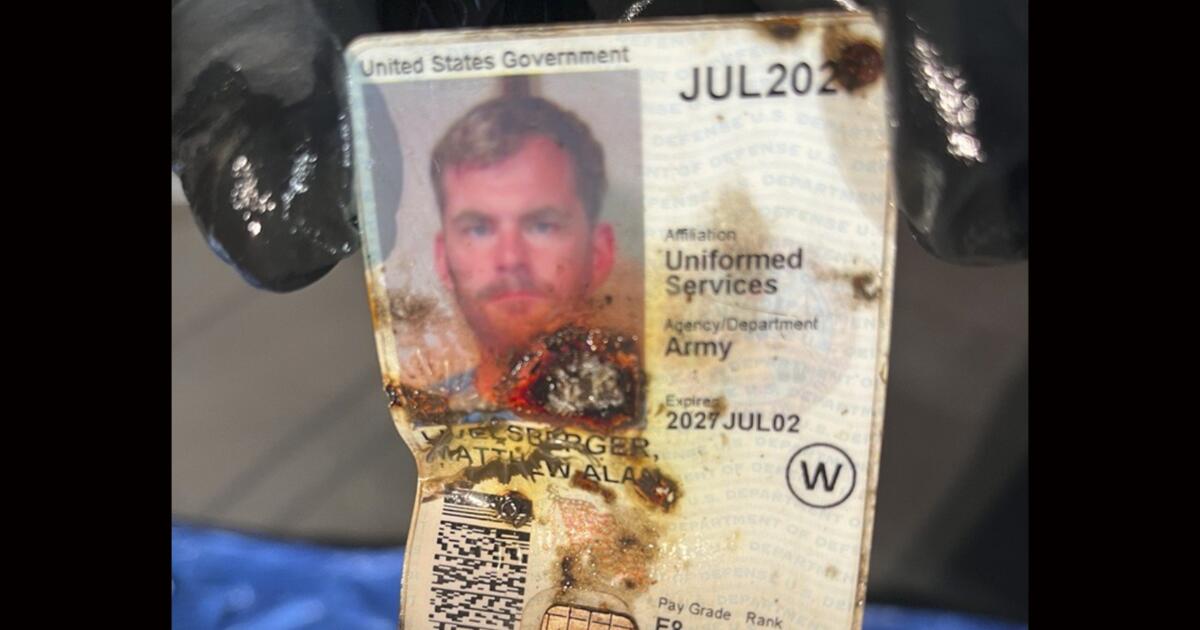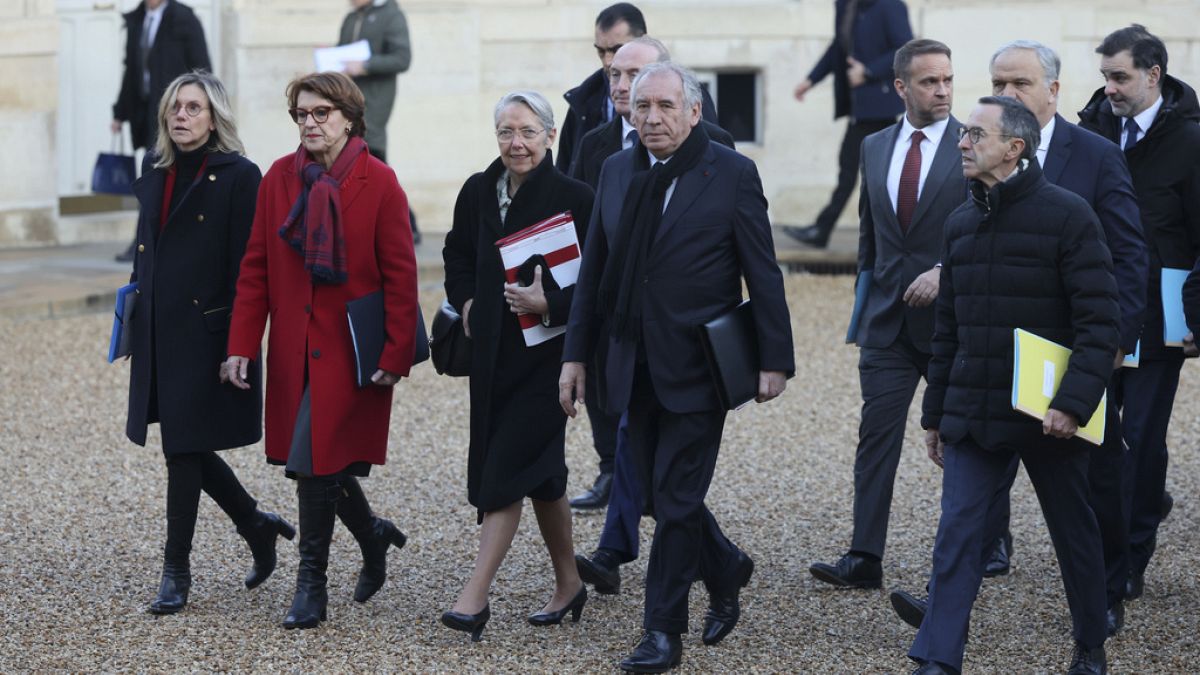Wyoming
2024's Towns In Wyoming That Come Alive In Fall

Wyoming, known as “The Equality State” for being the first to grant women the right to vote and “The Cowboy State” for its rich cattle ranching history, boasts stunning landscapes and a sparse population. With Wyoming’s cold winters, hot summers, and damp springs, autumn’s crisp, dry air is ideal for exploring small towns that really come alive in fall. Peak fall foliage color typically hits western Wyoming in late September, southern Wyoming in early October and the rest of the state in mid-October. So, if you have missed a few of the great Wyoming fall festivals or leaf-peeping spots for 2024, use our guide to start making plans for autumn 2025!
Hulett
Nestled in the picturesque landscape of northeastern Wyoming, Hulett is a charming small town with a population of around 300 residents. Its close proximity to the iconic Devils Tower, America’s first national monument, makes it a popular destination for visitors seeking breathtaking natural beauty. The tower, which rises 850 feet above the ground, offers stunning panoramic views of the vibrant fall foliage that peaks in early to mid October. Registering for an ascent is a rewarding adventure if you have climbing experience, but you can also enjoy the scenery from the base. In late October, you can enjoy the sights and scents of the Fall Vendor Fair at Crook County Fairgrounds.
Pinedale
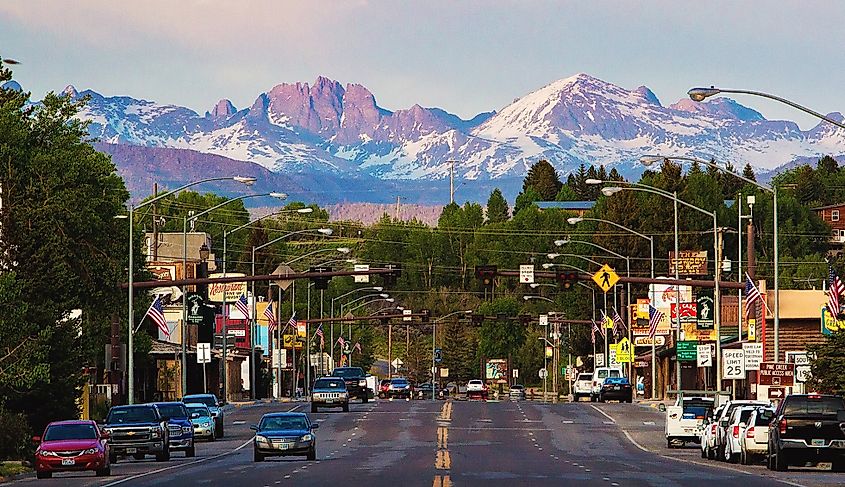
Pinedale serves as the gateway to the breathtaking Wind River Mountains, making it a prime destination for outdoor enthusiasts, especially during the fall season. This small town is a haven for hunters and anglers eager to pursue the region’s abundant wildlife, including rainbow and brown trout, as well as big game like deer and bighorn sheep. A highlight for visitors is the Museum of the Mountain Man, which remains open until late October and provides fascinating insights into the area’s rich history of hunting and fur trapping. For those seeking stunning autumn vistas, a drive to Squaretop Mountain in the Bridger-Teton National Forest offers unparalleled opportunities for leaf-peeping, particularly as the colors reach their peak in early October.
Teton Village
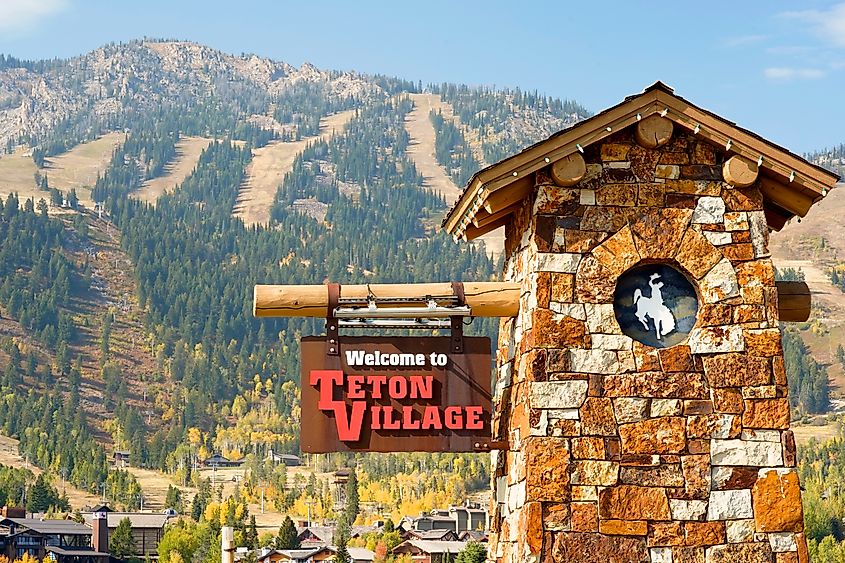
Located at the base of the renowned Jackson Hole Mountain Resort, Teton Village becomes a breathtaking spectacle of fall colors as the leaves change. Visitors can embark on an aerial tram ride that provides a unique vantage point to witness the vibrant autumn canopy from above. The experience is complemented by the enchanting sounds of elk bugling, which can be heard during September and early October as these magnificent creatures call to one another. The village will once again host the excellent Jackson Hole Fall Arts Festival in mid-September 2025, and you can still catch fall-themed concerts from the Grand Teton Music Festival in late October 2024.
Buffalo
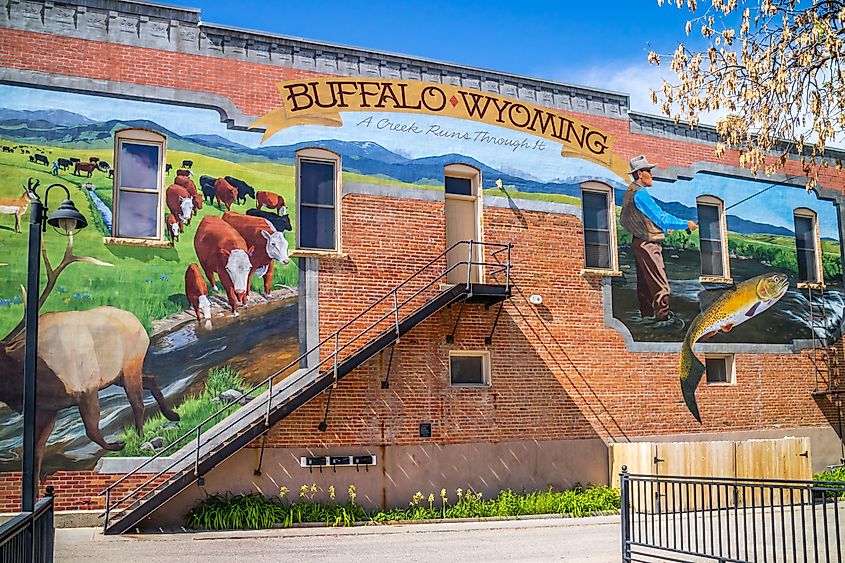
Buffalo, located at the foot of the majestic Bighorn Mountains, is steeped in history and charm. Known for its historic Occidental Hotel, founded in 1880, the town offers a glimpse into Wyoming’s rich past. Recently, Buffalo’s economy has shifted towards tourism, particularly during the fall months when visitors flock to the Cloud Peak Skyway Scenic Byway. This scenic route provides 10,000 foot-high views of the surrounding landscape’s vibrant autumn colors, which typically peak from early-to-mid October. During this time, be sure to explore Artisan Row, where you can discover the talents of local artists and enjoy the crisp, fresh air while immersing yourself in the town’s artistic community.
Laramie
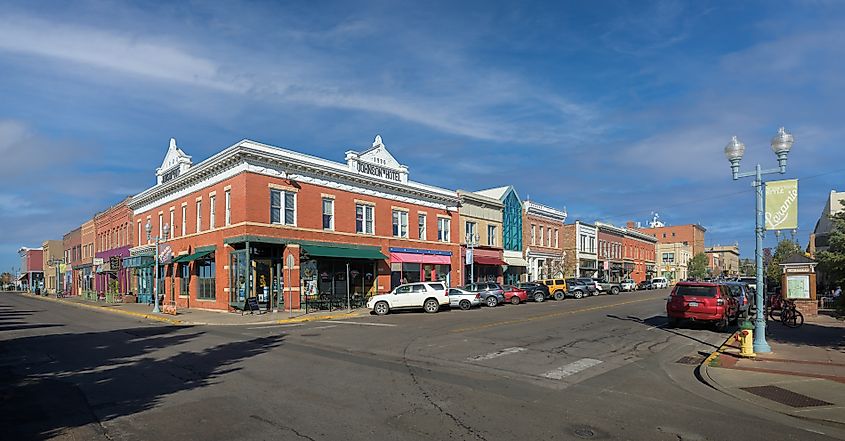
Laramie is alive with energy in autumn, particularly during the University of Wyoming’s football season. Home game weekends turn the town into an even-more-bustling hub, with local shops and restaurants filled with enthusiastic fans. October also brings a variety of autumn festivities, including a Hay Art and Pumpkin Festival in mid-month and the Laramie Fall Fest a few days before Halloween. If you want to get in touch with nature, the nearby Vedauwoo Recreation Area is a must-visit. Its dramatic rock formations, accessed by multiple hiking trails, serve as a stunning backdrop for the autumn colors.
Dayton
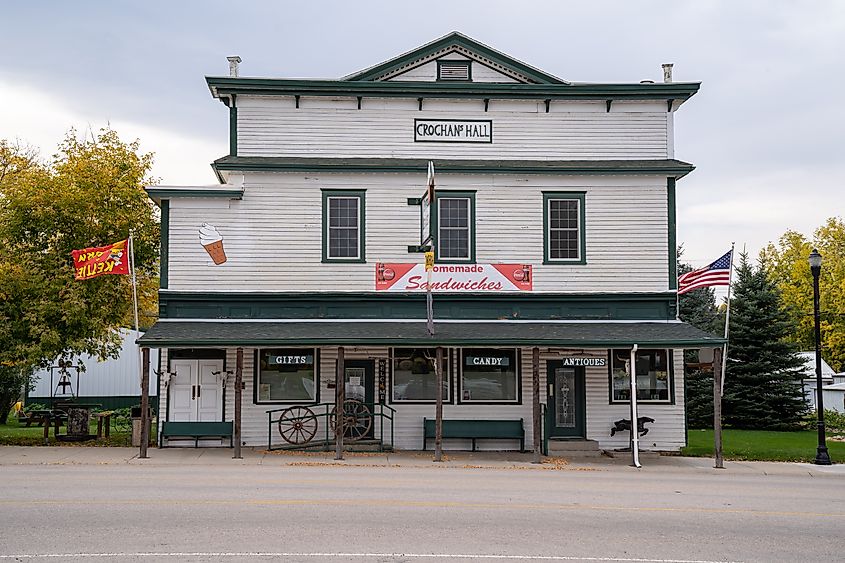
With a population of fewer than 1,000 residents, Dayton is a quaint small town that lies near the stunning Tongue River Canyon. As October unfolds, the hiking trails in the canyon become a vibrant tapestry of colors, making it a perfect time for outdoor exploration. If you find yourself in the area in mid-October 2024 or in years to come, make sure to check out the Dayton Fall Festival. This lively event features vendors, rides, music, and a “zombie run,” providing a taste of the region’s creativity and community spirit. While wandering through Dayton, take in the crisp autumn air and the scenic river views that are particularly striking against the backdrop of colorful canyon walls.
Encampment
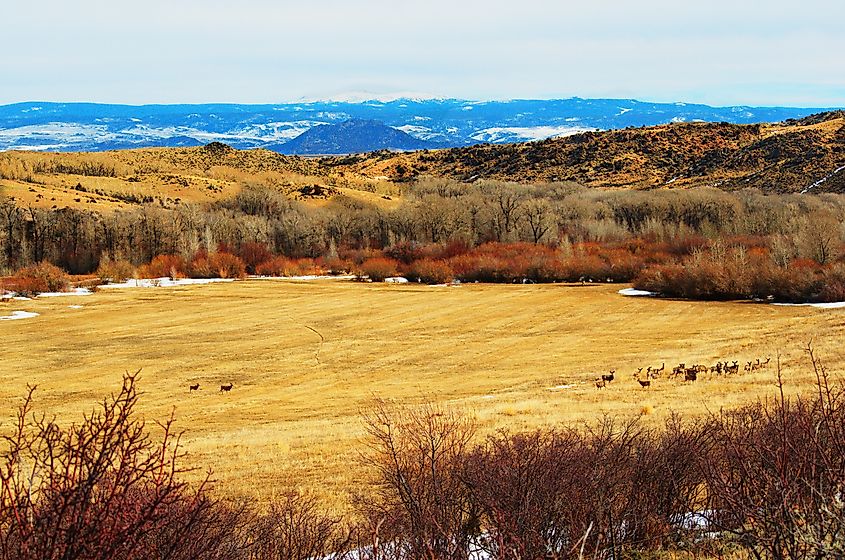
Once a thriving mining camp, Encampment has transformed into a quaint town that proudly showcases its rich history at the Grand Encampment Museum. This living history museum features recreated structures that tell the story of the area’s mining past and offer a glimpse into the lives of early settlers. A short drive west leads to Aspen Alley, a hidden gem renowned for its breathtaking aspen trees displaying vibrant colors, especially at the beginning of October. Additionally, for hunting enthusiasts, Carbon County is considered one of the best locations in Wyoming for big game hunting during the fall, making it a prime destination for outdoor activities.
Wyoming is an outdoor paradise no matter the season, but autumn casts a special spell over the state. The shine of the brilliant sunlight on colorful leaves, clear water, and towering rock formations creates an unforgettable viewing experience. Meanwhile, communities throughout the state celebrate the ideal weather and unmatched scenery with lively fall events. So, plan your autumn adventure in Wyoming and explore these charming small towns during this spectacular season.

Wyoming
City receives over $8M in grant funding from Wyoming Office of Outdoor Recreation

CHEYENNE, Wyo. — Projects in the City of Casper have received funding amounting to over $8 million.
On Friday, the Wyoming Office of Outdoor Recreation announced it had dispersed awards to various programs and initiatives across the state as part of its ARPA Grant Program, which has allocated an additional $17,719,899 in funding. To date, the grant program has awarded $20,332,258 for 21 outdoor recreation projects across the state.
The City of Casper received grant funding for three projects: improvements for Marion Kreiner Pool and Park, the North Casper Athletics and Recreation Complex and North Platte River Pedestrian Bridge. Altogether, the Oil City received $8,195,000 for the projects.
“We are excited to make improvements to Marion Kreiner Pool and bring a skate park and pump track to the adjoining park that will serve skateboard, scooter, and bicycle riders,” said Zulima Lopez, Casper Parks, Recreation, and Public Facilities director. “When coupled with Matt Campfield Park just one block north, this project will create a hub of recreational opportunities and community activities that will benefit the residents of North Casper, especially the youth.”
The following grant applications were approved during the second and final round of funding:
- $182,710 for Albany County Board of Commissioners’ Pilot Hill Schoolyard Trail Maintenance
- $1,850,000 for the City of Casper’s Marion Kreiner Pool and Park Improvements
- $2,845,000 for the City of Casper’s North Casper Athletics and Recreation Complex Improvements
- $3,500,000 for the City of Casper’s North Platte River Pedestrian Bridge
- $2,479,705 for the City of Laramie’s Spring Creek Trail Phase 2
- $1,393,817 for the City of Laramie’s LaBonte Park Pathway and Fitness Trail Improvements
- $743,849 for the City of Rock Springs’ Century West Park Pool/Sprayground Renovation
- $290,000 for the Cheyenne Children’s Museum’s CCM Community Space
- $410,000 for the Northern Arapaho Tribe’s Ethete Powwow Arbors
- $1,145,106 for the Wind River Development Fund’s Eastern Shoshone Playgrounds
- $78,100 for the Wind River Development Fund’s Outdoor Sports
- $508,483 for the Wind River Development Fund’s Powwow Arbor
- $333,289 for the Wind River Development Fund’s Tribal Buffalo Initiative
- $1,168,539 for the Wind River Development Fund’s Wind River Lakes
- $791,301 for the Wind River Development Fund’s WRR Trailheads
“These grants represent a significant investment in our communities and outdoor spaces, providing vital opportunities for recreation, health, and connection to nature,” said Brynn Hirschman, grants coordinator for the Wyoming Office of Outdoor Recreation. “We are thrilled to support projects that will enhance the quality of life for residents and visitors alike, while fostering economic growth through outdoor recreation.”
During its second round of applications, the office received 33 applications from local, county, state and tribal governments, as well as nonprofit organizations. The total requested funding equaled $47,839,730, exceeding the office’s available funds by $26,452,089.
The funds are made available through the American Rescue Plan Act, or ARPA, and Local Fiscal Recovery Funds, appropriated by the Wyoming Legislature and approved by Gov. Mark Gordon. The Wyoming Outdoor Recreation ARPA Grant Program was created to fund public outdoor recreation projects throughout the state. To be eligible, a project must occur within a Qualified Census Tract or Disproportionately Impacted Community as determined by the U.S. Treasury. The full impact of these grants will be realized over the coming years as these recreational projects are developed.
“The Jay Kemmerer WORTH Institute at the University of Wyoming is conducting an economic impact study of both the round one and two Wyoming Outdoor Recreation ARPA Grants,” said Dan McCoy, director of the WORTH Initiative. “Our economic impact study should help decision-makers better understand the total economic payoff for these investments. However, communities will also receive other benefits from these projects including better mental and physical health outcomes from greater access to the outdoors.”
For more information about the Wyoming Office of Outdoor Recreation and future funding opportunities, click here.
Related
Wyoming
Rare Whitetail-Mule Deer Fight Highlights Conflict Between Wyoming Species
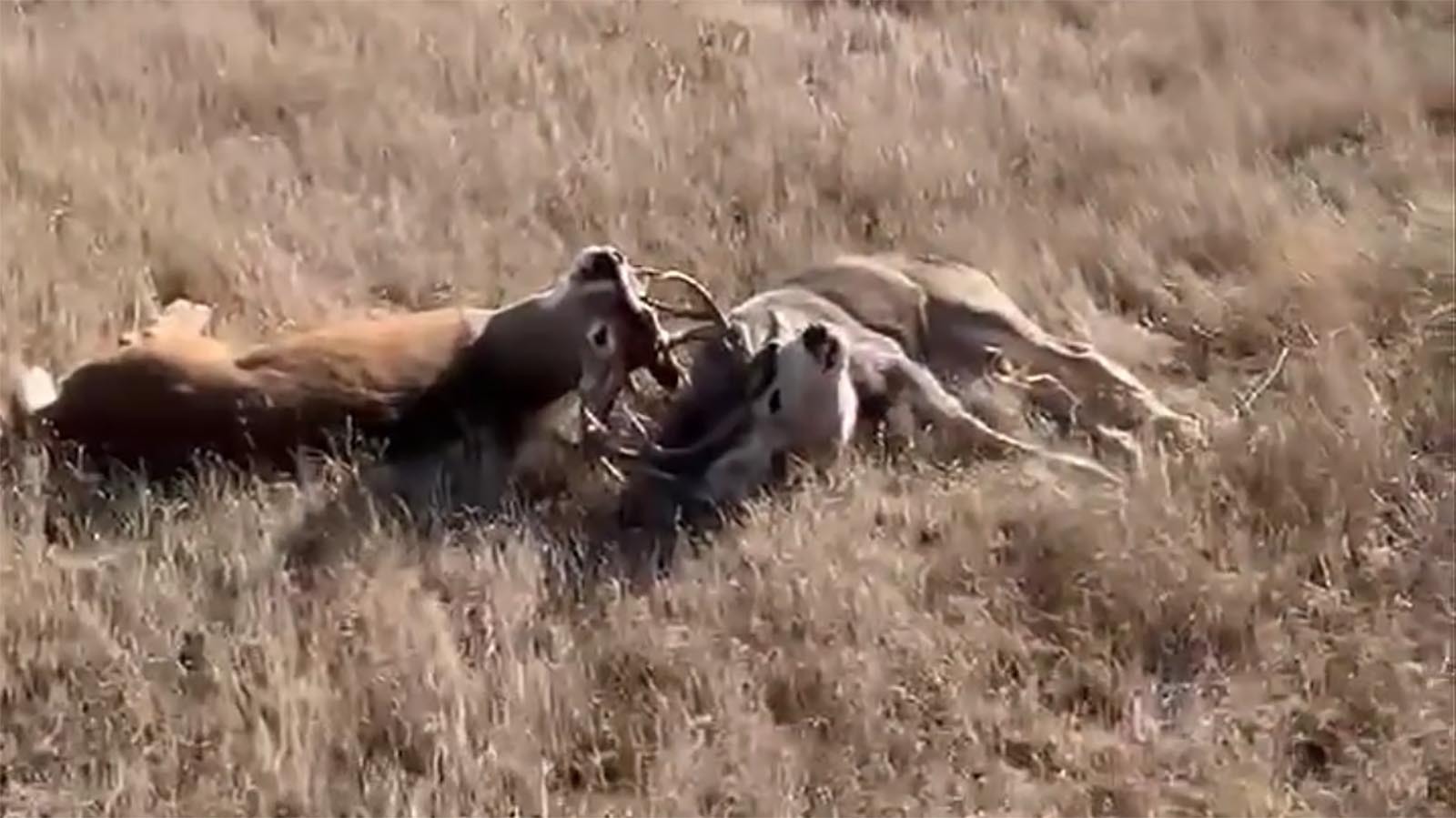
A video recently shot in South Dakota of a mule deer and whitetail buck that fought until they fell over in complete exhaustion encapsulates a region-wide conflict between the species.
In the bigger picture, whitetail seem to be winning the war, but at least in northeast Wyoming, mule deer won a battle.
That’s thanks to disease, Wyoming state Sen. Ogden Driskill, R-Devils Tower, told Cowboy State Daily.
“I have maybe 50 whitetails left on my property, and the mule deer are coming back. They’re a welcome sight. They do way less crop damage,” said Driskill, whose family’s ranch is right next to Devils Tower National Monument.
A recent outbreak of epizootic hemorrhagic disease, commonly called blue tongue, hammered whitetail in the region, but didn’t badly affect mule deer, he said.
That could mean that the muley victory will be short lived, Driskill said, because whitetail breed like rabbits.
“Whitetail are like a weed,” he said. “Once they take hold, they have twins and triplets, and they’ll just take over an area.”
Bucks Duke It Out
Driskill has run the family ranch for 50 years, and said he’s watched whitetails and mule deer clash from time to time.
But for bucks of the two species to get into an all-out battle to the finish is rare, he said.
As to why the bucks in South Dakota brawled, it might have been because of a severe shortage of does during the rut or deer mating season, he said.
Generally speaking, mule deer and whitetail stick to their own kind when it comes to mating – and to bucks clashing over who gets access to does.
However, the two species do occasionally cross-breed, producing rare hybrid offspring.
The video, posted online by Buckstorm outdoors media, shows the whitetail and mule deer bucksflopped over on their sides with their antlers locked together. The bucks are completely exhausted from what must have been a prolonged battle.
The bucks were separated, and both limped away, but it’s not known if either of them lived, according to Buckstorm.
In a text message to Cowboy State Daily, a Buckstorm representative said that the video was shot on private property in South Dakota, and the landowners didn’t want to be named.
‘Whitetail Are More Aggressive’
Driskill said that on his property and across the Black Hills in Wyoming and South Dakota, “mule deer and whitetails are in direct competition.”
And overall, whitetail have the edge, he said. Even though whitetails are the smaller of the two species, they’re scrappier.
“Whitetail are more aggressive than mule deer and they tend to habituate toward people a lot better,” he said.
That’s why he worried that the mule deer victory he’s seen in the wake of the blue tongue outbreak won’t last.
Split The Tags?
Northeast Wyoming has some prime mule deer habitat. And rich nutrients in the soil there could produce some monster bucks, Driskill said.
But he thinks the Wyoming Game and Fish’s approach to deer management there isn’t working.
In much of the region, hunters can get a general (over-the-counter) deer tag and kill whichever species they like, he said. And out-of-state hunters in particular like to kill mule deer.
“There’s whitetail hunting opportunity all over the country, but this is one of the few places with mule deer hunting opportunity,” Driskill said, so non-resident hunters relish the chance to get a muley.
Driskill has advocated for splitting the hunting tags for mule deer and whitetails and managing the species separately.
“The whitetail tag should be over-the-counter, and the mule deer tags ought to be draw tags,” he said.
General, or over-the-counter deer tags may be purchased at any time. For limited quota draw tags, hunters must apply months in advance, and not all hunters who put in for tags will draw them.
Driskill backed legislation to split mule deer and whitetail tags during the Legislature’s 2024 session, but that bill failed.
He said he doesn’t plan to introduce a similar bill during the upcoming 2025 session.
But Game and Fish should still consider separate management for the two species, at least in northeast Wyoming, he said.
“If Game and Fish worked on it, northeast Wyoming would really be known for mule deer,” he said. “The mule deer are surging on my ranch. And they’ll only surge as long as whitetail deer are scarce.”
Mark Heinz can be reached at mark@cowboystatedaily.com.
Wyoming
Experts say immigrants are important in state, Jackson Hole economy

The Jackson Hole Chamber of Commerce isn’t reacting yet to a second election of President-elect Donald Trump.
Rick Howe runs the chamber and told Jackson Hole Community Radio in December that three chamber businesses had reached out to him with immigration-related concerns. Howe does not soon anticipate the chamber taking a stance on immigration policies. But he said his policy teams are preparing to discuss changes as they come, such as mass deportations.
“We want to make sure that we have access to the workers that we need as a community to help us continue to do what we do on a daily basis,” Howe said. “Economic viability is key for us.”
He said he doesn’t have up-to-date data on the community’s number of working immigrants — documented or otherwise. But he said immigrants mostly work in the tourism and service industries, Teton County’s economic engine.
For Teton County and surrounding communities, how many immigrants would be targeted in a second Trump administration is still unknown.
But as Trump prepares to return to the White House, the question of how many will be impacted by his policies has become increasingly relevant for immigrants from many walks of life.
Trump’s administration promises the largest mass deportation in the country’s history, after the Biden administration’s deportations already hit a 10-year high. As summarized by the Niskanen Center, a potential policy playbook for the second Trump term, Project 2025, proposes cutting protections for holders of Temporary Protected Status, young adults known as Dreamers, more than 175,000 Ukrainians, in addition to restrictions for H-2A and H-2B temporary worker visas.
For unauthorized immigrants and migrants, part of what makes the population hard to track is obvious: They aren’t documented in the U.S. census. The census doesn’t separate documented and undocumented residents — it just totals.
University of Wyoming Professor Roger Coupal researches the economics of community developments across the state, with a focus on the agricultural sector. He has some rough estimates, putting the state’s number of undocumented migrants at 5,000.
Teton County, according to the U.S. census, is home to 2,900 residents born outside the U.S., or 12.5% of the county’s population. Just under a third have become naturalized citizens, according to the state’s Chief Economist Wenlin Liu.
Coupal noted that many who come to the U.S. are fleeing “extreme situations” when they come to Jackson in search of work or safer living conditions. As more immigrants settle and become part of the community and economy, many ski towns in the West, including Jackson Hole,could be devastated by mass deportations, he added.
Until new policies or deportation practices exist, though, Howe said his organization would be proactive. It’s a lot of “wait and see” until January, he said.
Howe envisions the chamber’s role as a source of information and connection.
He mentioned other nonprofits like Voices JH and One22, with whom the chamber could facilitate conversations, correct misinformation and be a source to which individuals and businesses alike can turn.
To start, the chamber is planning a Feb. 6 “Business Over Breakfast,” a monthly networking event for members, to address questions businesses may have a few weeks into Trump’s second administration.
Coupal said a loss of migrant workers and Trump’s impending tariffs could thrust the country into a recession.
“You could see a reduction in output on the industry side because we don’t have workers,” Coupal said.
There’s no research, he said, that supports Trump’s previous claims that immigrants hurt the economy.
A recent report by the American Immigration Council said mass deportation would cost the U.S. $315 billion initially, with long-term costs potentially tripling.
Jeremy Robbins, executive director of the American Immigration Council, said in a recent press release that mass deportation would come at an “extraordinary cost” to the government while hindering the economy. He warned of “tens of billions of tax-payer dollars lost, already-strained industries devastated, millions of people locked up in detention, and thousands of families torn apart.”
The study also indicates that national GDP could shrink 4.2% to 6.8%. For comparison, the economy decreased by 4.3% during the 2007 to 2009 recession, according to the study.
“We’re making the assumption that somehow Americans are going to replace all these people,” Coupal said, “and they won’t.”
-

 Business1 week ago
Business1 week agoOn a quest for global domination, Chinese EV makers are upending Thailand's auto industry
-

 Health6 days ago
Health6 days agoNew Year life lessons from country star: 'Never forget where you came from'
-
/cdn.vox-cdn.com/uploads/chorus_asset/file/24982514/Quest_3_dock.jpg)
/cdn.vox-cdn.com/uploads/chorus_asset/file/24982514/Quest_3_dock.jpg) Technology6 days ago
Technology6 days agoMeta’s ‘software update issue’ has been breaking Quest headsets for weeks
-

 World1 week ago
World1 week agoPassenger plane crashes in Kazakhstan: Emergencies ministry
-

 Politics1 week ago
Politics1 week agoIt's official: Biden signs new law, designates bald eagle as 'national bird'
-

 Business3 days ago
Business3 days agoThese are the top 7 issues facing the struggling restaurant industry in 2025
-

 Politics1 week ago
Politics1 week ago'Politics is bad for business.' Why Disney's Bob Iger is trying to avoid hot buttons
-

 Culture3 days ago
Culture3 days agoThe 25 worst losses in college football history, including Baylor’s 2024 entry at Colorado



